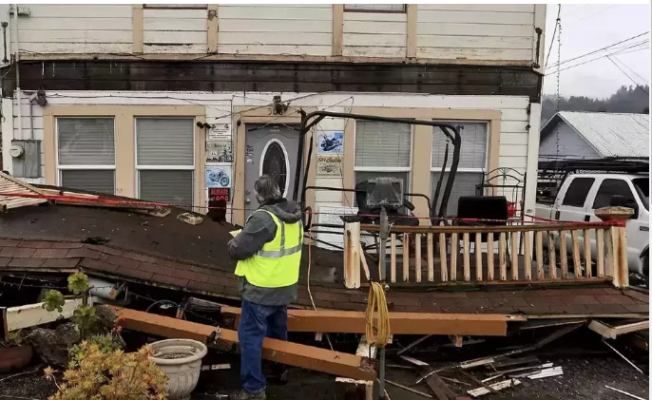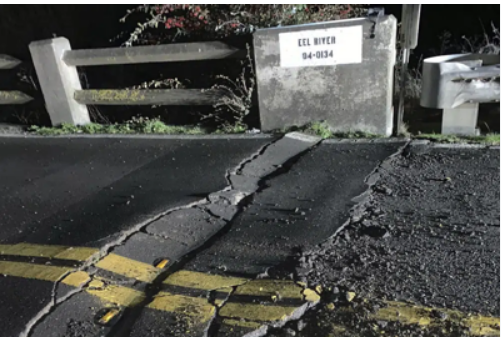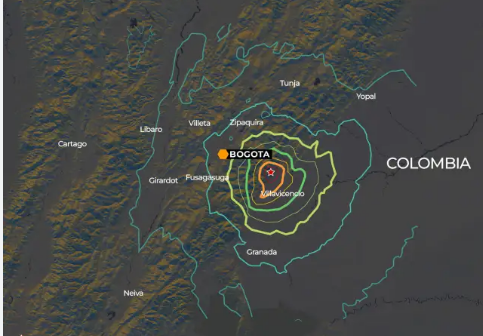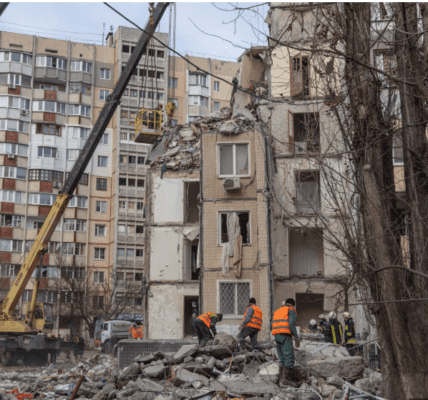- Homepage
- World Affairs
- Shaken Grounds: Colombia Region Hit by Magnitude 6.4 Earthquake
Shaken Grounds: Colombia Region Hit by Magnitude 6.4 Earthquake
Nature’s Unpredictable Fury Unleashes Tremors, Prompting Emergency Response
In an unforeseen turn of events, the Colombia region experienced the unsettling force of a magnitude 6.4 earthquake on Friday, leaving communities shaken and prompting heightened vigilance across the affected area. The seismic activity, reported by the European Mediterranean Seismological Centre, underscores the unpredictable nature of Earth’s movements and the need for swift response measures to mitigate potential damages.
Unraveling the Earth’s Fury: The Magnitude 6.4 Earthquake
The seismic disturbance, measuring 6.4 on the Richter scale, struck the Colombia region, sending tremors across the landscape and rattling the nerves of residents. The European Mediterranean Seismological Centre, responsible for monitoring and reporting seismic activities, quickly disseminated information about the event, alerting local authorities and communities to the potential impact.

Nature’s Unpredictable Wrath: Understanding Earthquakes
Earthquakes, born out of tectonic movements beneath the Earth’s surface, serve as potent reminders of the dynamic forces shaping our planet. In the case of Colombia, situated within a seismically active zone, the region becomes susceptible to the shifting plates that can trigger such seismic events. The sudden release of energy during an earthquake can lead to varying degrees of ground shaking, potentially resulting in structural damage and posing risks to the safety of those in affected areas.
Impact Assessment: Gauging the Fallout of the Earthquake
As communities grapple with the aftermath, the immediate focus shifts to assessing the impact of the earthquake. Structural engineers, geologists, and emergency responders collaborate to survey affected areas, identifying potential damages to buildings, infrastructure, and ensuring the safety of residents. The magnitude of the earthquake, while providing a measure of its intensity, doesn’t alone dictate the extent of the damage, as factors like depth, distance from the epicenter, and local geological conditions play crucial roles.
Emergency Response: Mobilizing Forces to Ensure Safety
In the wake of the earthquake, emergency response teams and local authorities swiftly mobilized to address the evolving situation. Search and rescue operations, medical assistance, and infrastructure assessments are integral components of the response efforts. Evacuation protocols may be activated, especially in areas prone to aftershocks or where structural integrity is compromised. The collaboration between local, regional, and national agencies becomes paramount in orchestrating an effective response and facilitating recovery.
Community Resilience: Navigating the Aftermath

Communities affected by the earthquake are at the forefront of the recovery process. Beyond physical damages, the emotional toll on residents can be significant. Support services, counseling, and community outreach initiatives become vital in fostering resilience and aiding the psychological recovery of those impacted. The collective strength of communities shines through as they come together to rebuild and support one another in the face of adversity.
Earthquake Preparedness: A Call for Proactive Measures
The occurrence of earthquakes underscores the importance of proactive measures in earthquake-prone regions. Building codes, early warning systems, and public awareness campaigns contribute to minimizing the impact of seismic events. Preparedness at individual and community levels becomes a linchpin in navigating the uncertainties associated with earthquakes, allowing for a more resilient response when nature unleashes its forces.
International Collaboration: Sharing Insights and Resources
The global nature of seismic activities necessitates international collaboration in understanding and mitigating the impacts of earthquakes. Scientific institutions, researchers, and disaster response organizations collaborate to share insights, data, and resources. Lessons learned from one region’s experiences can inform strategies and preparedness measures in other areas susceptible to seismic events.
Navigating Earth’s Dynamic Forces with Resilience
Read More News:
- Tragic Night in Las Vegas: A Sobering Reflection on Road Safety Challenges
- United Boeing’s 737 MAX Crisis: Safety Concerns and Industry Impact
As the Colombia region grapples with the aftermath of the magnitude 6.4 earthquake, the incident serves as a poignant reminder of the Earth’s dynamic and unpredictable nature. In the face of such events, resilience, preparedness, and community solidarity become indispensable tools in navigating the challenges posed by seismic activities. The global community, bound by the shared vulnerability to Earth’s forces, stands united in supporting affected regions and collectively advancing our understanding of earthquakes for a safer and more resilient future.




